Basics of Flexbox — 4
by Nabendu Biswas / May 29th, 2018
#css #beginners #webdev
Series: Flexbox-basics
We will start looking at the flex items property from here onwards.
We will use this codepen for our project.
Let’s start with the property to align a single item ie align-self.
We will use this basic setup.
<div class="container">
<div class="box box1">1</div>
<div class="box box2">2</div>
<div class="box box3">3</div>
<div class="box box4">4</div>
<div class="box box5">5</div>
<div class="box box6">6</div>
<div class="box box7">7</div>
<div class="box box8">8</div>
<div class="box box9">9</div>
<div class="box box10">10</div>
</div>
.container {
display:flex;
border:10px solid mistyrose;
height:100vh;
align-items: flex-start;
}
.box {
width:33.333%;
}
.box2{
padding-bottom: 200px;
}
.box6{
padding-bottom: 20px;
}
.box9{
padding-bottom: 300px;
}
It will show as below-
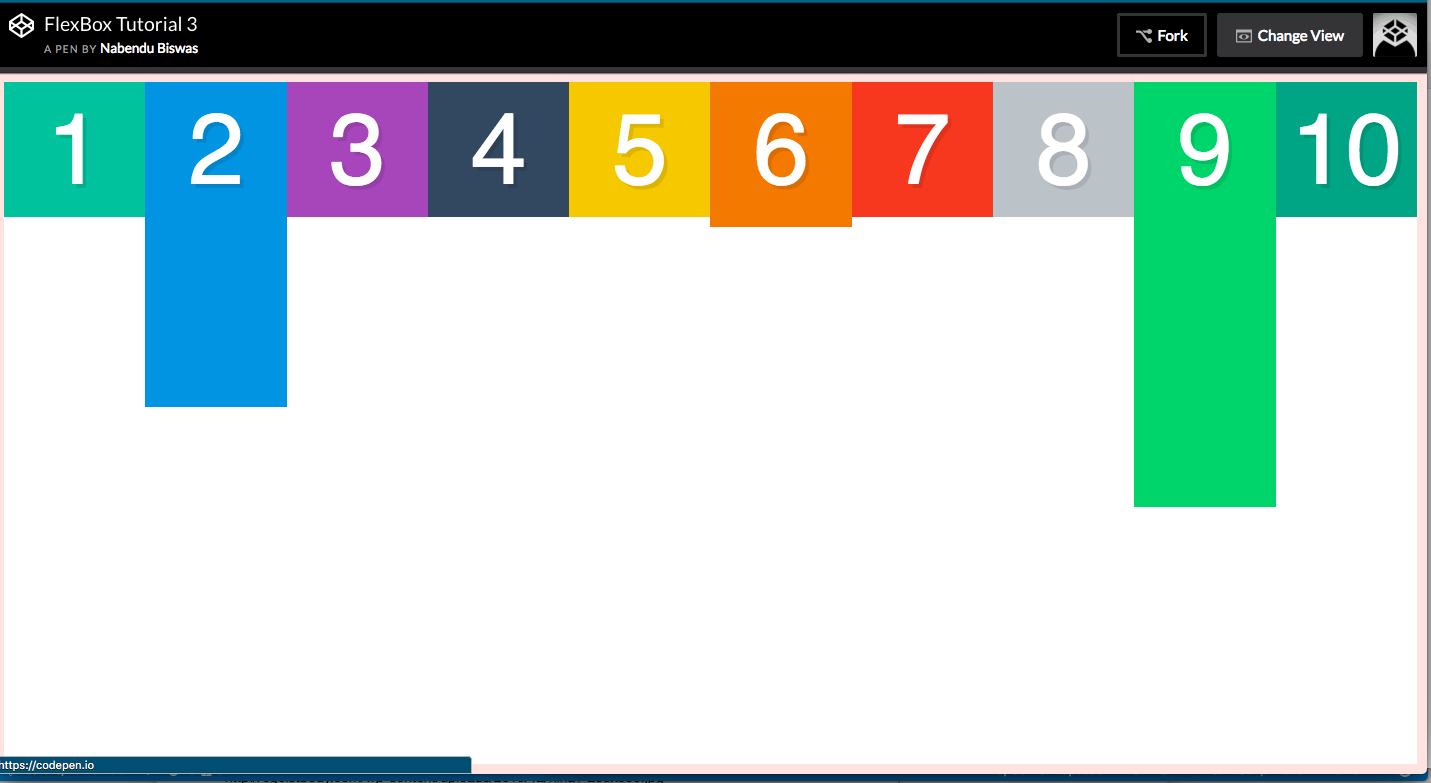 default settings
default settings
Now the align-self allows to overwrite the alignment along the cross axis for an individual flex item. We will see all main three vales in below example.
.box2{
padding-bottom: 200px;
align-self: flex-end;
}
.box6{
padding-bottom: 20px;
align-self: flex-start;
}
.box9{
padding-bottom: 300px;
align-self: center;
}
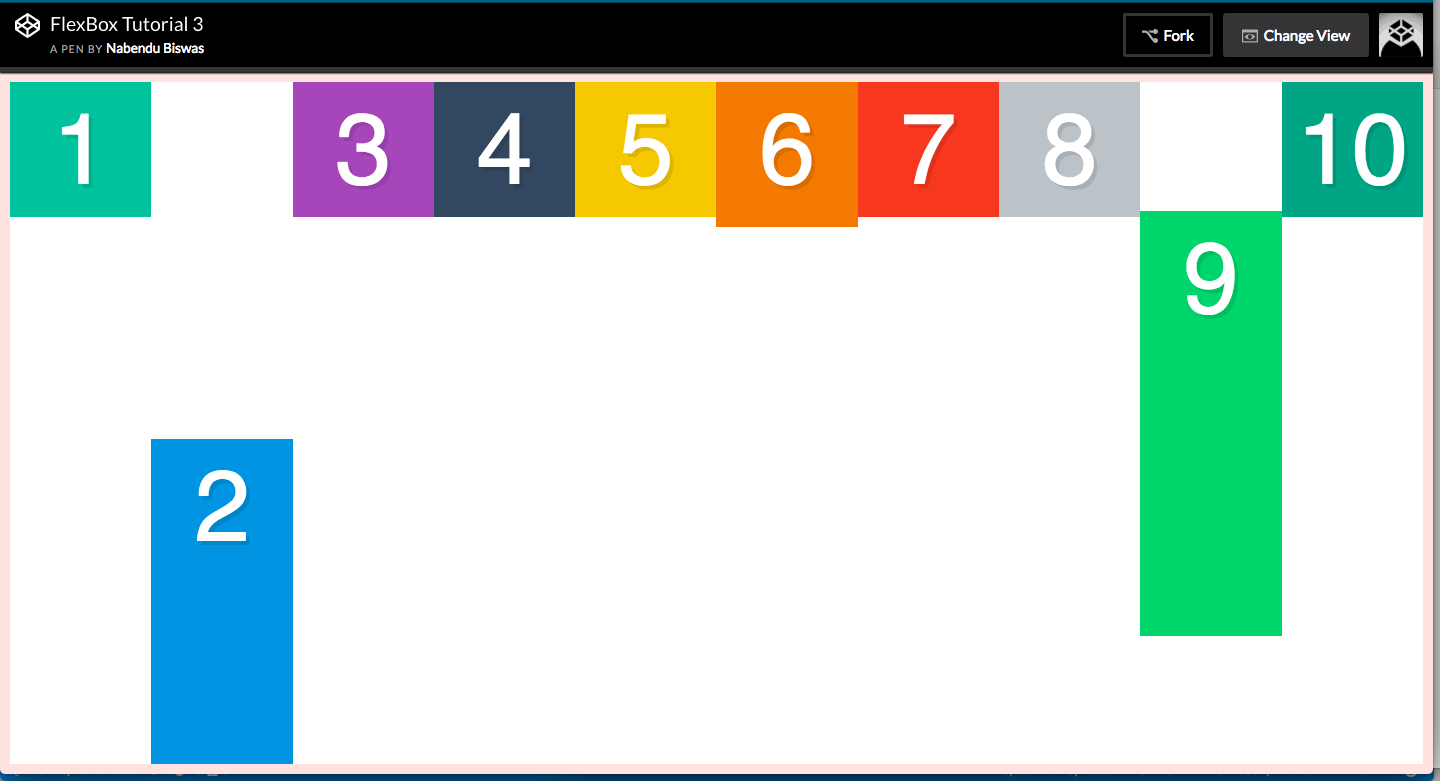 align-self
align-self
Now we will see the flex items property flex. This is actually a shorthand for flex-grow, flex-shrink and flex-basis combined, which we will see later.
The codepen for the same is here
The basic setup is -
<div class="container">
<div class="box box1">one 😎</div>
<div class="box box2">two 🍕</div>
<div class="box box3">three 🍟</div>
<div class="box box4">four 👍</div>
<div class="box box5">five 👀</div>
<div class="box box6">six 💩</div>
</div>
.box {
color:white;
font-size: 50px;
text-align: center;
text-shadow:4px 4px 0 rgba(0,0,0,0.1);
padding:10px;
}
/* Colours for each box */
.box1 { background:#1abc9c;}
.box2 { background:#3498db;}
.box3 { background:#9b59b6;}
.box4 { background:#34495e;}
.box5 { background:#f1c40f;}
.box6 { background:#e67e22;}
.box7 { background:#e74c3c;}
.box8 { background:#bdc3c7;}
.box9 { background:#2ecc71;}
.box10 { background:#16a085;}
.container {
display:flex;
}
The output is -
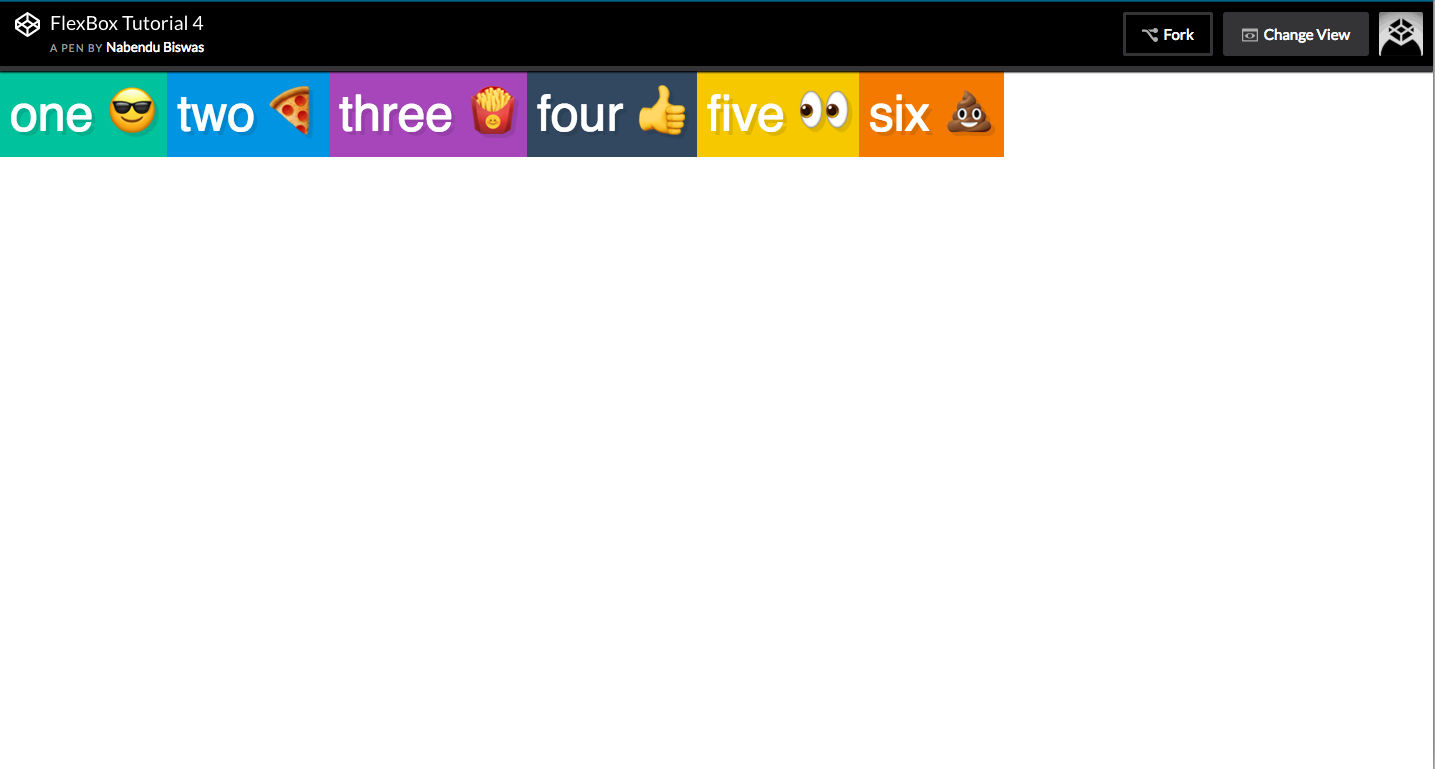 default setup
default setup
Now we can clearly, see there is some free space above. And the flex property decides how this free space will be distribute. Like if we give flex:1 to all items, the free space will be distribute equally among all flex-items.
.container {
display:flex;
}
.box{
flex:1;
}
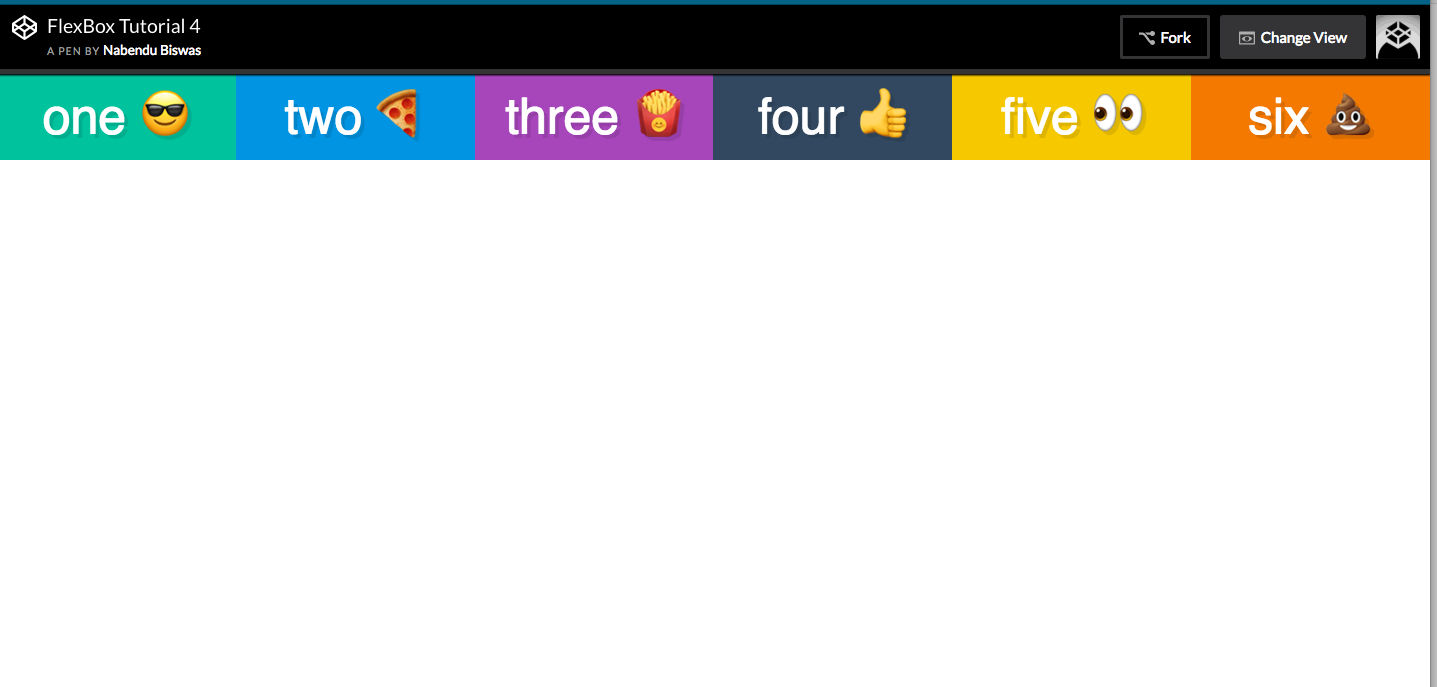 flex:1
flex:1
If we give flex:2 to a single item in above scenario, it will take twice the free space as others.
.container {
display:flex;
}
.box{
flex:1;
}
.box2{
flex:2;
}
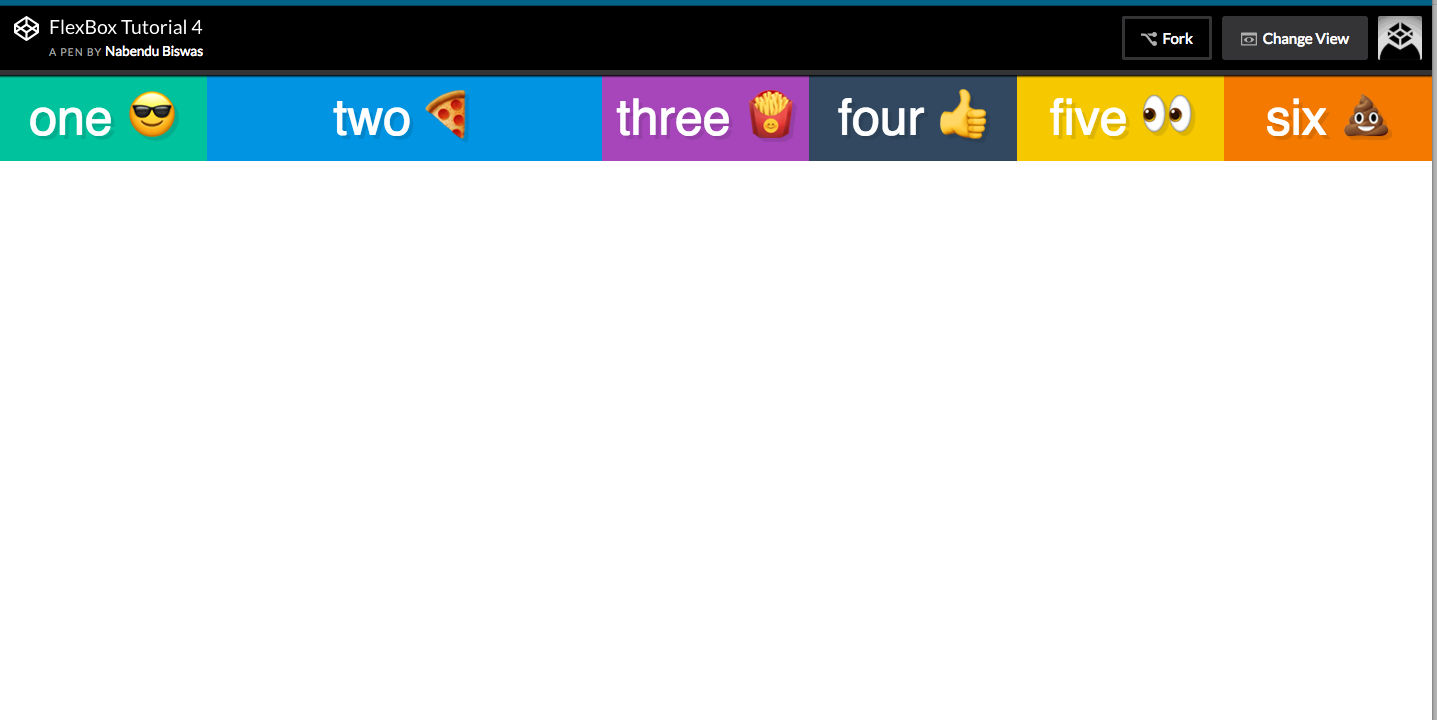 flex:2 to item2
flex:2 to item2
We will learn the individual properties of flex-grow, flex-shrink and flex-basis next.
For this we will be using this codepen as basis.
<div class="container">
<div class="box box1">one 😎</div>
<div class="box box2">two 🍕</div>
</div>
.box {
color:white;
font-size: 50px;
text-align: center;
text-shadow:4px 4px 0 rgba(0,0,0,0.1);
padding:10px;
}
/* Colours for each box */
.box1 { background:#1abc9c;}
.box2 { background:#3498db;}
/* We start writing out flexbox here. The above is just page setup */
.container {
display:flex;
}
.box1{
flex:1;
}
.box2{
flex:1 1 0;
}
Which will result in -
 basics
basics
flex: 1 is shorthand for flex-grow flex-shrink flex-basis
So, as above we can write flex: 1 1 0
It means flex-grow: 1, flex-shrink: 1 and flex-basis: 0. We will learn more about them now.
flex-basis means the default size of the element before remaining space is distributed. If we give it alone, it will only take the pixels we give it. like below.
.box1{
flex-basis: 400px;
}
.box2{
flex-basis: 300px;
}
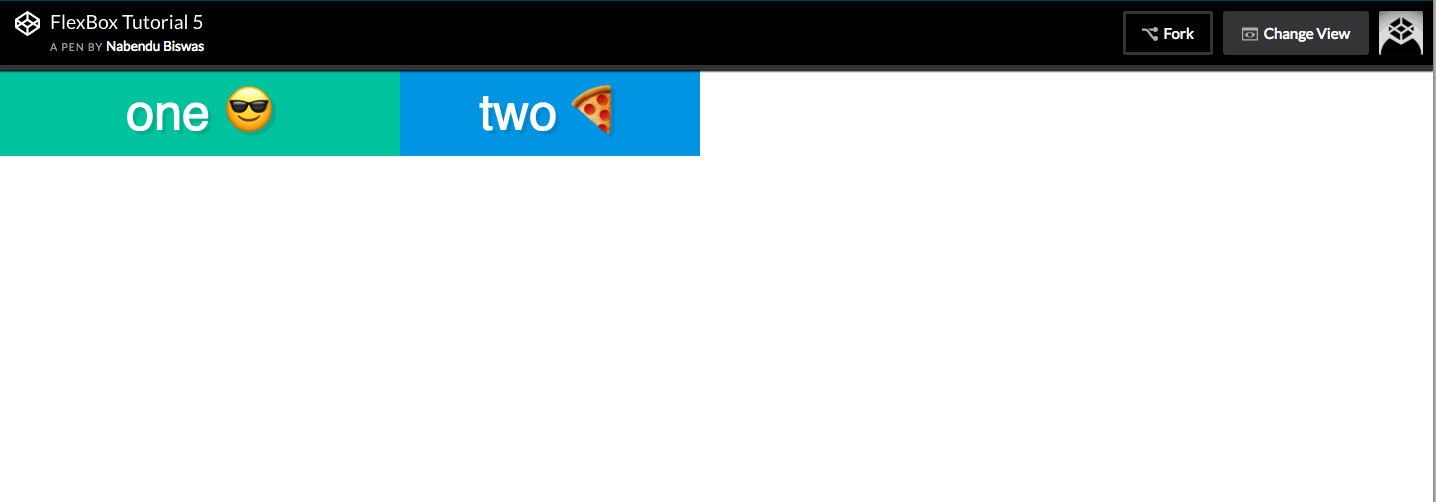 flex-basis
flex-basis
flex-grow means how to distribute the free space between items. Like in above situation we have a lot of free space.
.box1{
flex-basis: 300px;
flex-grow: 2;
}
.box2{
flex-basis: 300px;
flex-grow: 1;
}
So, it means box1 will take twice the available free space and box2 will take in comparison with box1 single free space.
 flex-grow
flex-grow
flex-shrink means the ability of item to shrink in the proportion when less space is there. Will come into play when we go to mobile layout
.box1{
flex-basis: 300px;
flex-grow: 2;
flex-shrink: 5;
}
.box2{
flex-basis: 300px;
flex-grow: 1;
flex-shrink: 1;
}
The above means, when there is less space then shrink box1 5 times more then box2
 flex-shrink
flex-shrink
This concludes the flexbox series. Hope you enjoyed it.